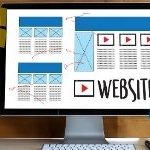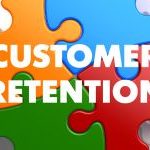A poorly designed user experience (UX) doesn’t just frustrate your audience; it actively damages your brand. When users encounter bad UX design, they associate it with a lack of professionalism, credibility, and care for their needs. This directly impacts your reputation, customer retention, and bottom line.
The stakes are high: studies show that 88% of users are less likely to return to a site after a bad experience. From increased bounce rates to diminished loyalty, the consequences of ignoring UX design are far-reaching. Let’s explore seven critical ways bad UX design can harm your brand and what you can do to avoid these pitfalls.

1. Loss of Trust and Credibility
Trust is the foundation of brand loyalty, but bad UX design erodes that trust. Broken links, inconsistent interfaces, and confusing navigation give users the impression that your business is unprofessional or unreliable. When users struggle to achieve their goals on your website or app, they’re unlikely to give your brand a second chance.
Pro Tip: Consistency and clarity in design build trust. Regularly audit your platforms to ensure a seamless, user-friendly experience.
2. Reduced Customer Retention
A bad UX experience doesn’t just repel first-time visitors—it also drives away loyal customers. When users encounter difficulties completing tasks, whether it’s making a purchase or finding information, they’re likely to turn to competitors with more intuitive interfaces.
For example, an overly complex checkout process can lead to high cart abandonment rates, costing you repeat business and revenue.
SEO Keyword Integration: Focus on improving usability, customer satisfaction, and seamless navigation to retain your audience.
3. Negative Word of Mouth
Negative experiences spread faster than positive ones. Frustrated users often take to social media or online reviews to vent their dissatisfaction, amplifying the impact of bad UX design. These negative testimonials can tarnish your brand’s reputation, making it harder to attract new customers.
A single viral tweet about your poor UX design could undo years of reputation-building efforts.
Action Step: Encourage satisfied users to leave reviews and actively address UX complaints to mitigate negative publicity.
4. Missed Revenue Opportunities
Bad UX directly affects your bottom line. Poorly optimized websites or apps create friction in the buyer’s journey, reducing conversions. For instance, slow-loading pages or non-responsive designs lead users to abandon their carts or exit your site entirely.
Did You Know? Websites that load within 2 seconds have a 15% higher conversion rate compared to slower ones.
To avoid losing potential revenue, optimize your digital platforms for speed, responsiveness, and simplicity.
5. Increased Support Costs
When users struggle with poorly designed interfaces, they often turn to customer support for help. High volumes of support tickets stemming from unclear processes or confusing navigation strain your resources and increase operational costs.
Example: If your FAQ section is buried under layers of confusing menus, users are more likely to contact support for basic queries.
Streamline UX design to reduce friction and empower users to find solutions independently.
6. Devaluation of Brand Perception
Your UX design reflects your brand’s values and priorities. A luxury brand with a clunky, outdated interface undermines its premium image, while a tech-savvy audience expects cutting-edge design.
Consistency is Key: Ensure your UX aligns with your brand identity to strengthen how customers perceive your value.
7. Reduced Accessibility and Inclusivity
Excluding users with disabilities through poor accessibility features damages your brand and limits your audience reach. A lack of screen reader compatibility, proper color contrast, or keyboard navigation alienates a significant portion of potential customers.
In addition to the ethical implications, ignoring accessibility can lead to legal challenges, further harming your brand.
SEO Tip: Accessibility compliance boosts SEO rankings while ensuring inclusivity for all users.
Key Statistics Demonstrating the Impact of Bad UX Design
- 88% of online consumers are less likely to return to a website after a poor experience.
- Businesses lose up to 35% of annual revenue due to poorly designed platforms.
- Websites that prioritize accessibility and usability increase user engagement by over 20%.
These numbers underscore the tangible impact of UX on your brand’s success.
How It Can Be Avoided
Avoiding the pitfalls of bad UX design requires a proactive, user-focused approach:
- Conduct Regular UX Research: Understand your users’ pain points through surveys, usability testing, and analytics.
- Prioritize Accessibility: Follow WCAG (Web Content Accessibility Guidelines) to ensure inclusivity.
- Simplify Navigation: Reduce friction in user journeys by streamlining processes and minimizing unnecessary steps.
- Use Iterative Design: Continuously refine your UX based on user feedback and evolving needs.
- Invest in Training: Educate teams about UX best practices to align design with customer expectations.
FAQs
Why is UX design critical to my brand’s success?
UX design impacts how users perceive your brand, influencing trust, loyalty, and revenue. A good UX fosters positive experiences and encourages repeat business.
How can I tell if my UX design is harming my brand?
Look for high bounce rates, negative reviews, low conversion rates, and frequent customer complaints as key indicators of bad UX.
Is UX design only relevant for websites?
No, UX design applies to all customer touchpoints, including mobile apps, kiosks, and even offline experiences. A seamless and intuitive interaction builds consistency across all platforms.
Final Thoughts
Bad UX design doesn’t just frustrate users; it actively damages your brand in measurable ways. From lost revenue to diminished credibility, the consequences are too significant to ignore. By prioritizing accessibility, usability, and ongoing improvements, you can turn your UX into a powerful tool for brand growth.
Remember, investing in exceptional UX is an investment in your brand’s reputation, customer loyalty, and long-term success. Don’t let bad UX design hold you back—take action today to build a better experience for your users and your business.











